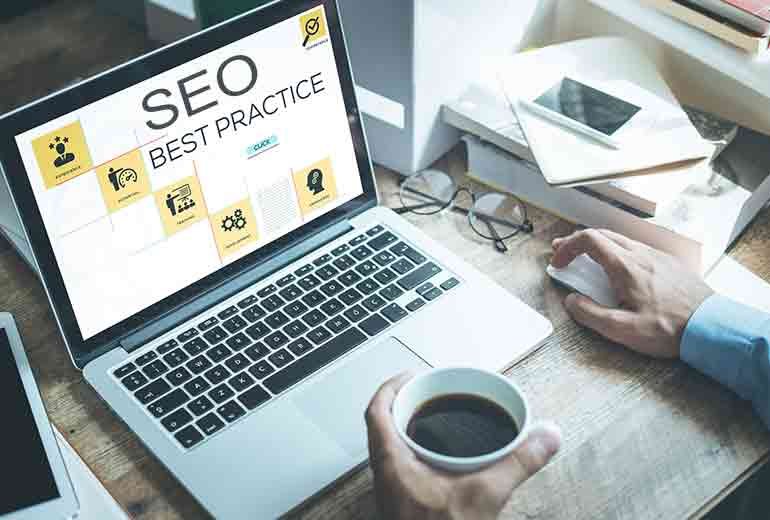
In today’s digital world, having a strong online presence is crucial for businesses that want to remain competitive so, it makes more important to know how to Implement SEO Best Practices for Maximum Impact.
At the heart of this success lies Search Engine Optimization (SEO), the powerful tool that drives organic traffic to your site, improves visibility, and helps you achieve long-term business growth. By implementing SEO best practices, you can boost your rankings, attract the right audience.
Understanding the Basics of SEO
Before diving into the specifics, it’s important to have a solid understanding of what SEO is and how it works. At its core, SEO is the process of optimizing your website and its content to make it more visible in search engine results. The better optimized your site is, the higher it will rank, leading to more organic traffic.
Here are the key components of SEO:
Keywords: Finding and focusing on the right keywords is essential for reaching your ideal audience.
On-Page SEO: This refers to optimizing individual pages on your website, including titles, meta descriptions, content, and header tags, to improve search engine rankings.
Off-Page SEO: This involves activities outside your website, such as building backlinks from reputable sites, to improve domain authority and search engine rankings.
Top SEO Best Practices to Implement

1. Keyword Research
Keyword research is the foundation of SEO. By identifying the search terms your target audience is using, you can create content that meets their needs and answers their questions.
Identify Relevant Keywords: Use tools like Google Keyword Planner, Ahrefs, or SEMrush to discover keywords with the right balance of search volume and competition.
Prioritize Long-Tail Keywords: These are specific, lower-traffic keywords that often convert better because they reflect more specific user intent.
Keyword Placement: Naturally incorporate your keywords into important on-page elements like title tags, meta descriptions, headers, and body content.
2. On-Page Optimization
To improve your site’s chances of ranking high in search results, optimizing individual pages is essential.
Unique Title Tags: Each page on your site should have a unique and compelling title that includes your primary keyword. Ensure it’s under 60 characters for the best search result display.
Meta Descriptions: Craft concise meta descriptions (under 160 characters) that summarize your content and encourage clicks. Include keywords to improve relevance.
Organize Content for Readability: Break up your content into sections with clear headings (H1, H2, H3). This enhances user experience and aids search engines in interpreting your content.
High-Quality Content: Content is king. Focus on creating informative, relevant, and original content that answers your audience’s queries and provides value.
Optimize Images: Compress images to improve loading times and include descriptive alt text to improve visibility in search results.
3. Technical SEO
A technically optimized website is essential for both user experience and search engine rankings.
Mobile-Friendly Design
Improve Page Speed
Secure Your Website
XML Sitemap
Robots.txt File
4. Off-Page SEO
Off-page SEO activities help to enhance your site’s authority and trustworthiness, which can significantly improve rankings.
Build Quality Backlinks: Earn backlinks from reputable websites in your industry to improve domain authority.
Social Media Promotion: Share your content across various social media platforms to increase visibility and drive traffic back to your website.
Local SEO: If you’re a local business, optimizing for local search is crucial. Claim and enhance your Google My Business profile to boost local search visibility.
5. Continuous Monitoring and Analysis
SEO is an continuous process, not a one-time job. It’s important to track your progress and stay updated with changes in SEO best practices.
Track Website Performance: Use tools like Google Analytics and Google Search Console to monitor traffic, bounce rates, and keyword performance.
Stay Updated with Trends: SEO trends evolve rapidly. Stay updated by following trusted SEO blogs, joining webinars, and adjusting your strategy accordingly.
Conduct Regular Audits: SEO audits help identify issues like broken links, duplicate content, or slow page load times, ensuring your site remains optimized over time.
Additional SEO Best Practices
User Experience (UX): Make sure your website is intuitive, visually attractive, and simple to navigate. A positive UX keeps visitors engaged and encourages them to explore more pages.
Video SEO: Video content is rapidly growing in importance. Optimize your videos with descriptive titles, tags, and captions to improve visibility in search engines.
Schema Markup: This structured data helps search engines better understand your content, leading to enhanced visibility in search results (e.g., rich snippets).
Why SEO Best Practices Matter
Implementing SEO best practices is critical for several reasons:
Increased Organic Traffic: Optimized websites rank higher in search results, which leads to more organic visits.
Improved Brand Visibility: Ranking higher increases your brand’s visibility, making it easier for potential customers to find you.
Higher Conversion Rates: SEO helps attract highly targeted traffic, resulting in better conversion rates.
Better User Experience: A fast, mobile-friendly, and well-organized site enhances the user experience and reduces bounce rates.
Long-Term Results: Unlike paid ads, SEO provides long-lasting benefits, driving traffic over time without ongoing costs.
The Changing SEO Landscape
SEO is constantly evolving, and staying ahead. Emerging trends like AI-powered tools, mobile-first indexing, and Core Web Vitals are reshaping how search engines evaluate websites. Staying informed about these updates helps keep your SEO strategy relevant and adaptable for the future.
Conclusion
SEO is not just a set of tactics—it’s a long-term investment in your website’s success. By following these SEO best practices, you can improve your site’s visibility, attract the right traffic, and boost your business growth. SEO is a dynamic field that requires continuous learning and adaptation, so be patient, stay informed, and keep optimizing. With consistent effort and a strategic approach, you can unlock the full potential of your online presence.
Connect with us on Instagram